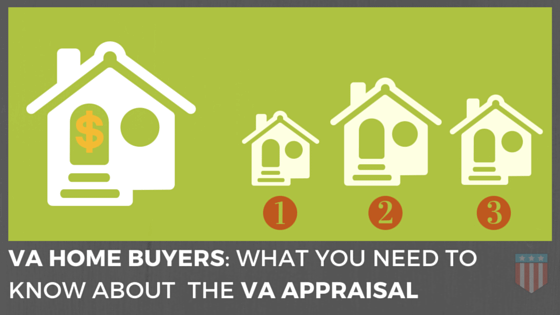So there seems to be some misunderstandings about VA Loans and the supposed “VA Home Inspection.” Since many of our clients are military, this is something I have to clear up again and again: The VA Appraisal is not a Home Inspection.
[SCROLL DOWN FOR VIDEO]
When you are using a VA Loan to purchase a property, one of the first steps after opening escrow is ordering the VA Appraisal. Now, your lender will make sure it’s ordered, but it’s important to understand that the VA Appraisal is NOT the same thing as your HOME inspection.
Now the reason for this confusion may lie in the fact that VA Appraisers DO perform a more in-depth look at the property than an appraiser would for another type of loan. For example, a VA Appraiser must follow guidelines laid out by the Department of Veteran Affairs which dictate that the home must meet certain “Minimum Property Requirements.”
The main concentration of these “Minimum Property Requirements” is to ensure that the property is LIVABLE, SAFE, and SANITARY. Let’s say for example that the hot water heater is bad and there’s no hot water. Or the furnace doesn’t work so there’s no heat. Or let’s say a toilet has been removed in one of the bathrooms, or there are not the required carbon monoxide and smoke detectors present. There’s a good chance that in any of these scenarios, the appraiser will list these defects as “Mandatory Repairs” prior to closing on the property.
In most reasonable cases, the repairs will be minor enough to be able to negotiate with the seller for their completion prior to closing. In other cases, let’s say with a bank-owned property, there is a chance the seller will refuse to do any repairs. Regardless of the outcome, these
“Minimum Property Requirements” will NEED to be met prior to the buyer closing on the purchase. Now the primary purpose of a VA Appraisal however— after ensuring it meets the Minimum Property Requirements—is to APPRAISE the property and submit their opinion of value to the lender. This protects not only the lender by ensuring they are not lending more money than the property is worth, but it also protects the buyer by ensuring they are not over-paying for the property. Now let’s say the appraisal value comes in LOWER than your agreed upon purchase price. In this case, there are several ways to proceed.
The first, and the one we typically pursue is to negotiate with the seller to LOWER the purchase price to MEET the appraised value. Appraisals are independent and un-biased opinions of value, so it is highly likely that if one appraisal comes in low, that another appraiser will come up with a similar conclusion. In this case, depending on the market conditions of the area, the buyer typically has some leverage in that the unbiased opinion of value from the appraiser recommends that the value is lower than your currently agreed-on purchase price. Also, the seller knows that the lender cannot lend based on a purchase price above appraised value unless the buyer makes up the difference in value. In the past, we have had great success with re-negotiating the sales price in this scenario, and this is our first preference.
Which brings us to the second option—The buyer can make up for the difference themselves by bringing in their own money. Let’s say a home appraised at four-hundred thousand dollars and the currently agreed purchase price is four-hundred and ten-thousand dollars. If the seller will not agree to lower the price, or only agrees to lower it by an amount less than the difference, then the buyer can place their own money down to make the deal work. Another possible scenario is that the seller will “meet the buyer half-way” so they might be willing to drop the price by five-thousand, so long as the buyer comes in with the other five-thousand dollars.
The next option is to file a dispute of the value by submitting a “Reconsideration of Value” request to the Lender, who—if they believe the dispute has merit—will submit it along to the appraiser. This is often a challenging process and is often not successful, but it is nonetheless an option to pursue in the case that the previous options do not work out.
Now the final option is for the buyer to walk away from the deal. If no agreement can be made with the seller on lowering the price, and if the buyer does not wish to make up the difference in value, and the Reconsideration of Value does not produce the desired results, the last option is to walk away from the deal. In this case, assuming the buyer has not removed their appraisal contingency, the buyer can typically back out with minimum repercussions and recover their Earnest Money Deposit.
Now like I mentioned earlier, this VA Appraisal is NOT to be confused with a HOME inspection. An appraisal IS required, however a home-inspection is NOT, although we HIGHLY——HIGHLY, recommend ALL buyers hire a home inspector when purchasing a property. With a home inspection, the inspector will conduct a much more in-depth inspection of the property and will typically use tools and knowledge above and beyond those that an appraiser would. We have another video about home-inspections, so be sure to check that out if you have more questions about that.
If you have any other questions about VA appraisals or anything else Real Estate related in Southern California, give us a call or check out our website for tons of other information on this and many other topics.




